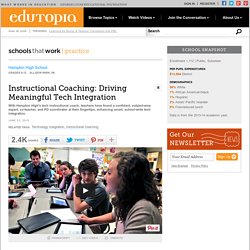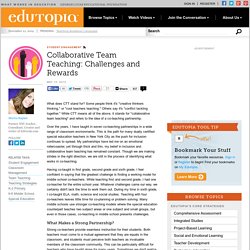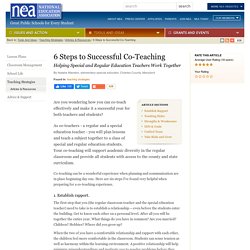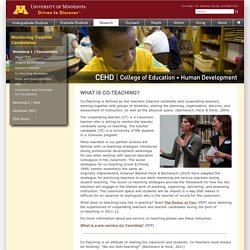

Instructional Coaching: Driving Meaningful Tech Integration. Overview Integrating Technology Instructional Coaching Hampton High School has integrated technology across its entire program with a full-time instructional coach who supports the teachers in this work.

The presence of a coach sharpens the school's focus on how technology can best make the learning more engaging and relevant for students, and gives teachers support in navigating the vast field of technology applications and devices. Many teachers either do not have the time or might even be resistant to bringing technology into their classroom; others may think it's just about doing the same thing with new tools. A good instructional coach not only provides teachers with the resources, support, and know-how on working with technology, but also ensures the smart use of technology to deepen the teaching and learning for all involved.
How It's Done Funding: How They Got Started Bringing Teachers on Board Key Questions for Integrating Technology Why do you want to use this technology here? Radical Learners « Three New Articles About Instructional Coaching Radical Learners. In the past few months, I’ve published three articles that you might find valuable, if you are interested in coaching.

First, for the February JSD, I published an article on the Instructional Coaching Cycle. You may read it here: The Instructional Coaching Cycle Second, for Principal Leadership, I published an article on how to set up a successful coaching program. You can read it here: Success Factors for Instructional Coaching Programs. MyNotes: Instructional Coaching #edtechcoach. Everyone is coachable: we are all capable of change & growth. All who wish to continually improve their craft … never lose the need to be coached. ~ Art Costa & Bob Garmston I was recently asked a question on Twitter: ‘Are some teachers un-mentorable?’

My response was along the lines of, ‘No-one is unmentorable or uncoachable; a person always has the capacity for growth.’ This belief underpins my ideas about school change and my school’s teacher growth model on which I presented at researchED conference in Sydney and ACEL in Melbourne. In scholarly literatures, coaching (sometimes used interchangeable with the term ‘mentoring’, such as in the writings of Ellie Drago-Severson, who I talked with last year) seems to be divided into expert coaching and peer coaching. Expert coaching involves an expert or master who provides guidance to a less-experienced apprentice.
The other kind of coaching is peer or reciprocal coaching in which someone is paired with those of a similar level of expertise. Like this: Like Loading... Co-Teaching. Teamteaching. Collaborative Team Teaching: Challenges and Rewards. What does CTT stand for?

Some people think it's "creative thinkers thinking," or "cool teachers teaching. " Others say it's "conflict tackling together. " While CTT means all of the above, it stands for "collaborative team teaching" and refers to the idea of a co-teaching partnership. Over the years, I have taught in seven co-teaching partnerships in a wide range of classroom environments. This is the path for many dually certified special education teachers in New York City as the push for inclusion continues to spread. Co-Teaching in Inclusive Classrooms: A Metasynthesis of Qualitative Research. 6 Steps to Successful Co-Teaching. By Natalie Marston, elementary special educator, Charles County, Maryland Found In: teaching strategies Are you wondering how you can co-teach effectively and make it a successful year for both teachers and students?

As co-teachers - a regular and a special education teacher - you will plan lessons and teach a subject together to a class of special and regular education students. Your co-teaching will support academic diversity in the regular classroom and provide all students with access to the county and state curriculum. Co-teaching can be a wonderful experience when planning and communication are in place beginning day one. 1. The first step that you (the regular classroom teacher and the special education teacher) need to take is to establish a relationship -- even before the students enter the building. When the two of you have a comfortable relationship and rapport with each other, the children feel more comfortable in the classroom. 2. How do you manage behaviors? 3. 4. 5. 6. Co-Teaching Foundations. Co-Teaching is defined as two teachers (teacher candidate and cooperating teacher) working together with groups of students; sharing the planning, organization, delivery, and assessment of instruction, as well as the physical space.

(Bacharach, Heck & Dank, 2004) The cooperating teacher (CT) is a classroom teacher who is willing to mentor the teacher candidate using co-teaching. The teacher candidate (TC) is a University of MN student in a licensure program. Many teachers in our partner schools are familiar with co-teaching strategies introduced during professional development workshops for use when working with special education colleagues in the classroom. The seven strategies for co-teaching (Cook & Friend, 1995) remain essentially the same as originally implemented, however Washut Heck & Bacharach (2010) have adapted the strategies for practicing teachers to use while mentoring pre-service teachers during student teaching. Co-Teaching.